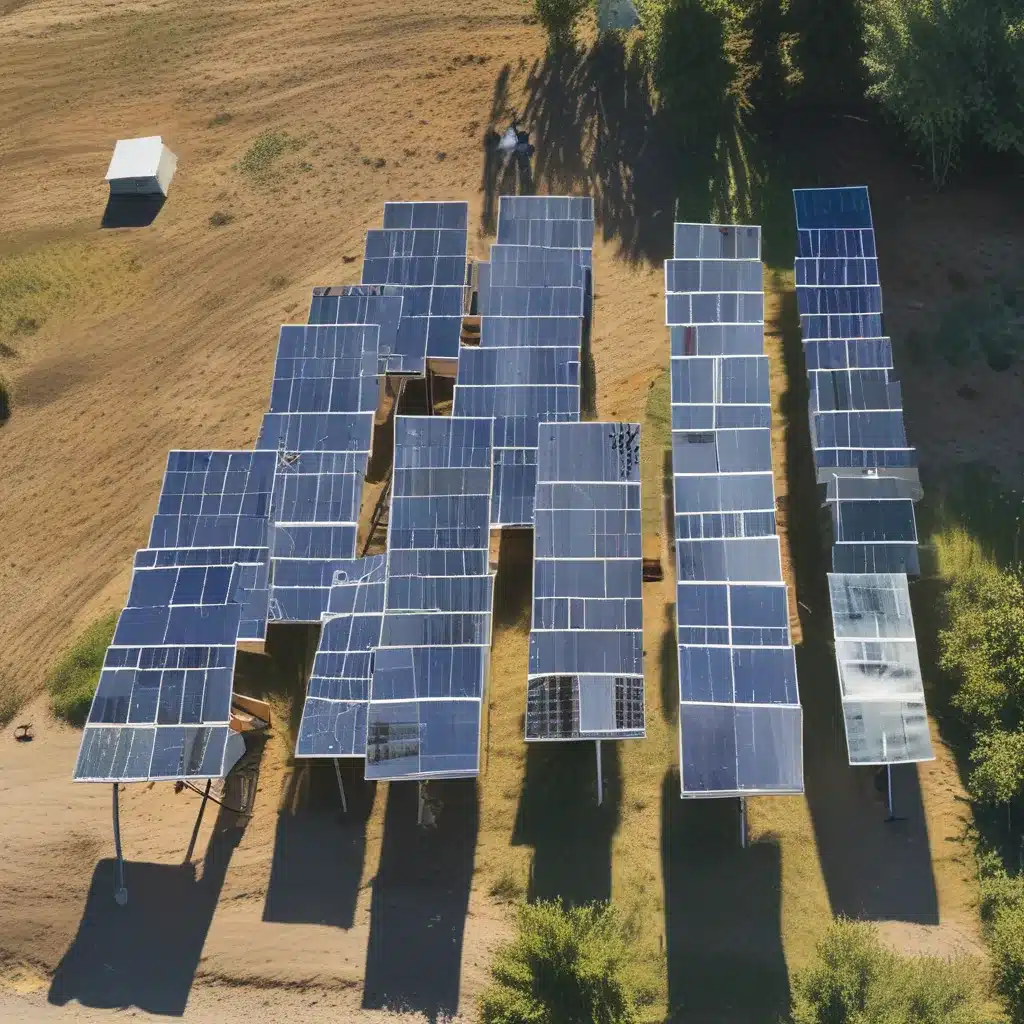
The Solar Dilemma: Searching for Equity
I’ll never forget the day I stumbled upon the concept of community solar. As a renter living in a small apartment, the idea of powering my home with renewable energy had always felt like a distant dream. Sure, I cared about the environment and wanted to do my part, but between the steep upfront costs and the logistical challenges of installing solar panels on a property I didn’t own, it just didn’t seem feasible.
That is, until I learned about community solar. The more I delved into it, the more excited I became. Here was a solution that could bring the benefits of solar energy to folks like me – those who couldn’t (or didn’t want to) install panels on their own roofs. It was a way to democratize access to clean, renewable power and make it available to all, regardless of one’s living situation or financial means.
As I dug deeper, I discovered that community solar programs are rapidly expanding across the United States. According to the Department of Energy, nearly 50% of households and businesses are unable to host rooftop solar systems, often due to factors like renting, unsuitable roof conditions, or prohibitive upfront costs. Community solar is poised to change that, allowing everyone to reap the benefits of solar power.
Unpacking Community Solar: How it Works
So, how exactly does community solar work? The basic premise is simple: a solar energy project, typically a large-scale array, is built in a shared community location. Individuals, businesses, nonprofits, and other electricity customers can then subscribe to a portion of the energy generated by that array, receiving credits on their utility bills for the electricity produced.
As the Department of Energy explains, community solar customers typically pay a monthly subscription fee in exchange for their share of the solar project’s output. This fee is then offset by the credits they receive on their utility bills, resulting in overall savings on their electricity costs.
But the benefits of community solar go beyond just financial savings. As Austin Energy notes, community solar can also enhance grid resilience, build community wealth, and create local jobs – all while expanding access to clean, renewable energy.
Democratizing Solar: Unlocking Equitable Access
One of the most exciting aspects of community solar is its potential to bring the advantages of solar energy to underserved communities. According to the Department of Energy, community solar programs designed for low-income households often include key consumer protections, such as ensuring subscribers achieve energy savings and incorporating other safeguards.
This emphasis on equity is crucial, as it helps to bridge the gap between those who can afford to install solar panels on their own homes and those who have been left behind by traditional solar models. By making community solar accessible to all, we can create a more inclusive and sustainable energy future.
The Community Solar Landscape: A Closer Look
As community solar continues to gain momentum, the landscape of available programs has become increasingly diverse and dynamic. According to the Department of Energy, there is currently at least one community solar project in 43 states and the District of Columbia, with 22 states and D.C. having passed enabling legislation to encourage or mandate the development of these programs.
To give you a better sense of the community solar landscape, let’s take a look at a few key statistics:
| Metric | Value |
|---|---|
| States with at least one community solar project | 43 |
| States/D.C. with enabling legislation | 22 |
| States/D.C. with low-income community solar legislation | 17 |
These numbers demonstrate the rapid growth and increasing accessibility of community solar, as more and more states recognize the value of this shared solar solution.
Navigating the Community Solar Landscape
With so many options available, it can be daunting for consumers to navigate the world of community solar. Fortunately, there are resources and tools to help guide the way.
The Department of Energy’s community solar webpage is a great starting point, providing an overview of how these programs work and highlighting key consumer protections to look for. Additionally, many state and local governments have dedicated community solar portals or hotlines that can connect residents with available subscriptions in their area.
For those interested in exploring community solar further, I’d also recommend checking out resources from the New York State Energy Research and Development Authority (NYSERDA). They offer a wealth of information on program design, consumer protections, and best practices for community solar development.
The Future of Community Solar: A Shared Vision
As I reflect on my journey of discovering community solar, I can’t help but feel a sense of excitement and optimism for the future. This shared solar solution has the power to transform the way we think about renewable energy, breaking down the barriers that have long excluded so many from its benefits.
Solar As Systems Inc., the company I work for, is at the forefront of this revolution. We’re committed to developing innovative community solar projects that bring clean, affordable energy to communities across the country, with a particular focus on ensuring equitable access for underserved populations.
It’s a lofty goal, to be sure, but one that I believe is within reach. With the continued support of government initiatives like the Department of Energy’s National Community Solar Partnership, and the tireless efforts of solar companies, community organizations, and engaged citizens, I’m confident that we can make the dream of shared solar a reality for all.
So, whether you’re a renter, a homeowner, or the manager of a multifamily building, I encourage you to explore the world of community solar. It just might be the shared solution you’ve been searching for.


